Kingdom Plantae Family Nitrariaceae Scientific name Peganum harmala Rank Species | Order Sapindales Genus Peganum Higher classification Peganum | |
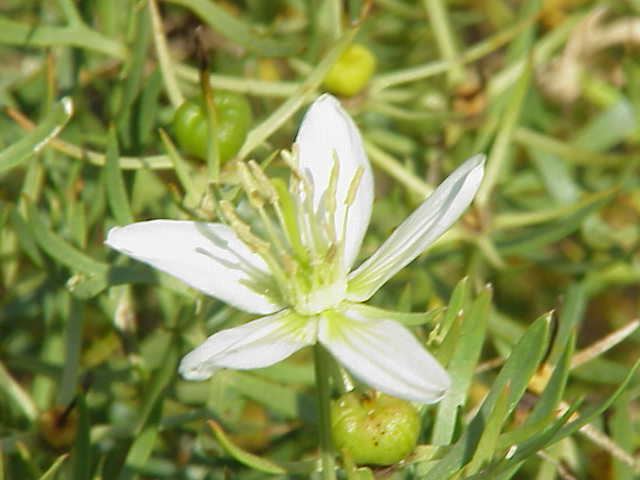 | ||
Similar Peganum, Caapi, Mimosa tenuiflora, Common rue, Psychotria viridis | ||
Peganum harmala
Peganum harmala, commonly called esfand, wild rue, Syrian rue, African rue, harmel, or aspand (among other similar pronunciations and spellings), is a plant of the family Nitrariaceae. Its common English-language name came about because of a resemblance to rue (which is not related). The plant's seeds are especially noteworthy because they have seen continual use for thousands of years in the rites of many cultures. The plant has remained a popular tool in both folk medicine and spiritual practices for so long that some historians believe the plant may be the ancient "soma" (a medicinal aid that is mentioned in a variety of ancient Indo Iranian texts but whose exact identity has been lost to history).
Contents
- Peganum harmala
- Peganum harmalavideo
- Traditional use
- Research into other potential uses
- Fertility
- Antiprotozoal
- Anticancer
- Alkaloids
- References

It is a perennial plant which can grow to about 0.8 m tall, but normally it is about 0.3 m tall. The roots of the plant can reach a depth of up to 6.1 m, if the soil where it is growing is very dry. It blossoms between June and August in the Northern Hemisphere. The flowers are white and are about 2.5–3.8 cm in diameter. The round seed capsules measure about 1–1.5 cm in diameter, have three chambers and carry more than 50 seeds.
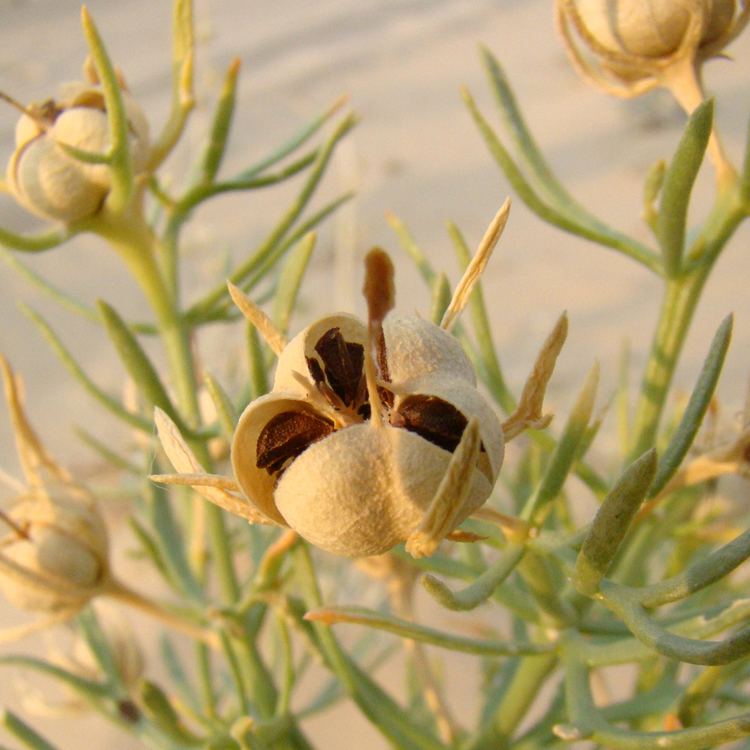
Peganum harmala is of Asian Origin and grows in the Middle East and in part of South Asia mainly in India and Pakistan. It was first planted in the United States in 1928 in New Mexico by a farmer wanting to manufacture the dye "Persian red" from its seeds. Since then, it has spread invasively to Arizona, California, Montana, Nevada, Oregon, Texas and Washington. "Because it is so drought tolerant, African rue can displace the native saltbushes and grasses growing in the salt-desert shrub lands of the Western U.S."

Peganum harmalavideo
Traditional use
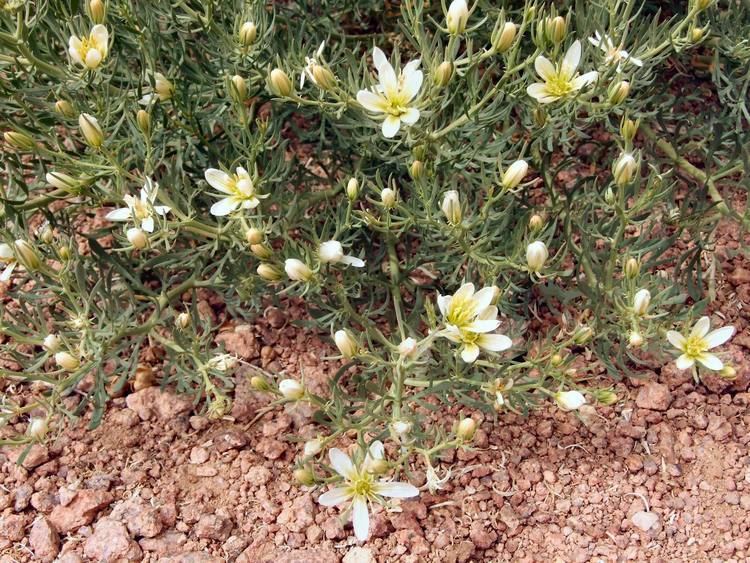
In Turkey, dried capsules from this plant are strung and hung in homes or vehicles to protect against "the evil eye". It is widely used for protection against Djinn in Morocco (see Légey "Essai de Folklore marocain", 1926).
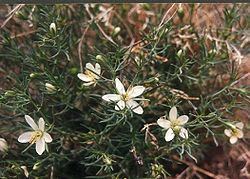
In Iran, and some countries in the Arab world such as, Syria, Iraq, Saudi Arabia and Jordan , dried capsules mixed with other ingredients are placed onto red hot charcoal, where they explode with little popping noises in a way similar to American popcorn. When they burst a fragrant smoke is released. This smoke is wafted around the head of those afflicted by or exposed to the gaze of strangers while a specific prayer is recited. This tradition is still followed by members of many religions, including Christians, Muslims, and some Jews. In several versions of the prayer accompanying the ritual, the name of an ancient Zoroastrian Persian king, called Naqshaband, is used. He is said to have first learned the prayer from five protective female spirits, called Yazds.
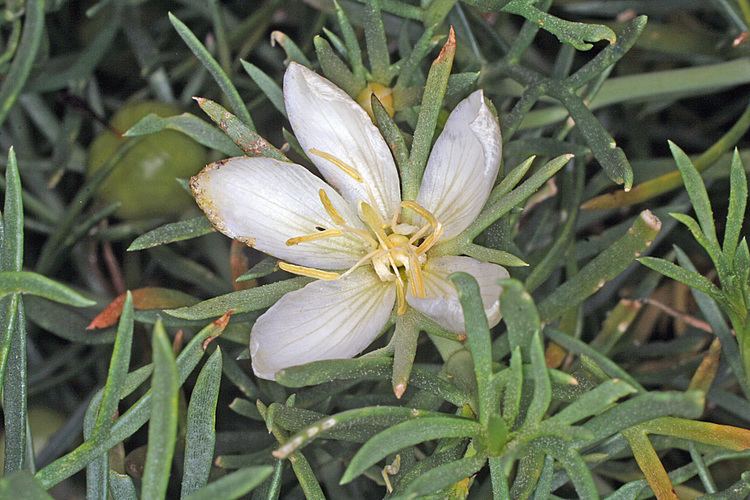
In Yemen, the Jewish custom of old was to bleach wheaten flour on Passover, in order to produce a clean and white unleavened bread. This was done by spreading whole wheat kernels upon a floor, and then spreading stratified layers of African rue (Peganum harmala) leaves upon the wheat kernels; a layer of wheat followed by a layer of Wild rue, which process was repeated until all wheat had been covered over with the astringent leaves of this plant. The wheat was left in this state for a few days, until the outer kernels of the wheat were bleached by the astringent vapors emitted by the Wild rue. Afterwards, the wheat was taken up and sifted, to rid them of the residue of leaves. They were then ground into flour, which left a clean and white batch of flour.
Peganum harmala has been used to treat pain and to treat skin inflammations, including skin cancers.
Peganum harmala has been used as an emmenagogue and abortifacient agent.
The "root is applied to kill lice" and when burned, the seeds kill insects and inhibit the reproduction of the Tribolium castaneum beetle.
It is also used as an anthelmintic (to expel parasitic worms). Reportedly, the ancient Greeks used the powdered seeds to get rid of tapeworms and to treat recurring fevers (possibly malaria).
A red dye, "Turkey red", from the seeds (but usually obtained from madder) is often used in western Asia to dye carpets. It is also used to dye wool. When the seeds are extracted with water, a yellow fluorescent dye is obtained. If they are extracted with alcohol, a red dye is obtained. The stems, roots and seeds can be used to make inks, stains and tattoos.
Some scholars identify harmal with the entheogenic haoma of pre-Zoroastrian Persian religions.
Research into other potential uses
Several scientific laboratories have studied possible uses for Peganum harmala through studies in laboratory animals (in vivo) and in cells (in vitro).
Fertility
In very large quantities (dosages exceeding those commonly used for medicinal, therapeutic, or spiritual purposes), it can reduce spermatogenesis and male fertility in rats.
Antiprotozoal
Peganum harmala has been shown to have antibacterial and anti-protozoal activity, including antibacterial activity against drug-resistant bacteria.
One of the compounds found in P. harmala, vasicine (peganine), has been found to kill Leishmania donovani, a protozoan parasite that can cause potentially fatal visceral leishmaniasis.
Another alkaloid, harmine, found in P. harmala, has appreciable efficacy in destroying intracellular parasites in the vesicular forms.
A small study in sheep infected with the protozoal Theileria hirci found Peganum harmala extract to be an effective treatment.
Anticancer
"The beta-carboline alkaloids present in medicinal plants, such as Peganum harmala and Eurycoma longifolia, have recently drawn attention due to their antitumor activities. Further mechanistic studies indicate that beta-carboline derivatives inhibit DNA topoisomerases and interfere with DNA synthesis."
Peganum harmala has antioxidant and antimutagenic properties. Both the plant and the extract harmine exhibit cytotoxicity with regards to HL60 and K562 leukemia cell lines.
Alkaloids
Some alkaloids of harmal seeds are monoamine oxidase A inhibitors (MAOIs):
